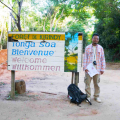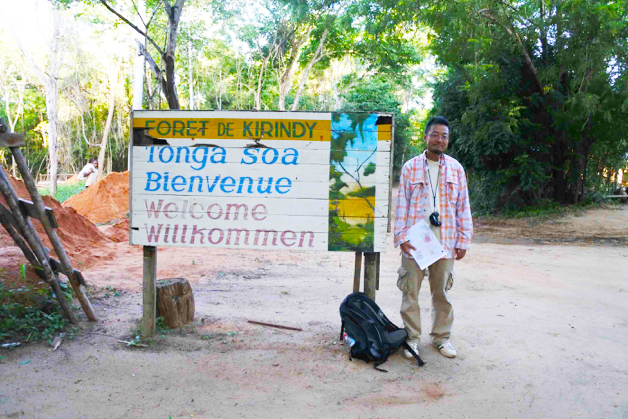
2016 Activity Report No.2
Long-term field studies and biodiversity conservation
in protected forests of Madagascar
Shinichiro ICHINO
Post-doctoral researcher, Center for African Area Studies
Kyoto University
- Research themes
Conservation of biodiversity in the African tropical forest has come to be considered a global environmental issue. Madagascar has unique flora and fauna with high rates of endemism. In spite of the uniqueness, it is estimated that more than 90% of natural forest of Madagascar has disappeared and most animals and plants are facing a high risk of extinction. Thus, Madagascar is considered to be one of the biodiversity hotspots where high-priority conservation efforts are required.
Despite the current expansion of Madagascar’s protected forest areas, the most forests already have been fragmented and only small forest fragments still remain in some area of Madagascar. In such area, conserving the remaining small forests as many as possible is more realistic conservation strategy to achieve high biodiversity as a whole. Although small forest has risk of extinction of some specific taxa, it has also some advantages that management can protect the forest strictly and react quickly to any situation. In order to achieve biodiversity conservation by the remaining small forests, it is required to clarify the potential risk and the potential value of small forests in the area.
In this study, I focus on relations between long-term field research and biodiversity conservation. In field primatology and field ecology, long-term field studies have been conducted in several research sites in Madagascar and the activity is expected to contribute to biodiversity conservation in the area. In spite of such expectation, we still have not clarified what kind of activities and scientific findings by the long-term field research contribute to biodiversity conservation in the area. Thus, clarification of the relations and the background situation in each research site may help to understand the way to enhance values of small forest for biodiversity conservation.
I examine cases of the following three Malagasy forests where long-term field studies for more than 20 years have been conducted and clarify the roles and the problems of the long-term field study and other related activities on biodiversity conservation of the forests.
1) Berenty Reserve (Southern Madagascar, semi-deciduous gallery forest)
2) Ankarafantsika National Park (Northwestern Madagascar, deciduous dry forest)
3) Kirindy Forest (Southwestern Madagascar, deciduous dry forest)
- Dispatch details
Madagascar (January 18 – March 28, 2016)
First, I visited Kirindy forest (Photo 1) in which field station for researchers is operated by German Primate Center, one of our counterparts, and observed the study site and the field station (Photo 2).
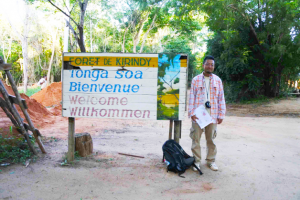 Photo 1. Entrance of Kirindy Forest
Photo 1. Entrance of Kirindy Forest
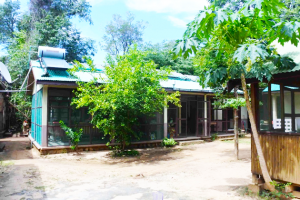 Photo 2. Field station of Kirindy Forest
Photo 2. Field station of Kirindy Forest
After the short visit, I moved to Berenty Reserve with Ms. Perline Ranomenjanahary, a Master’s student of the University of Antananarivo, our counterpart in Madagascar and conducted behavioral observation of lemurs, a survey of plants and animals in the reserve, and a field interview survey on local knowledge on plants and animals (Photo 3). I also conducted survey of nocturnal animals using sensor cameras.
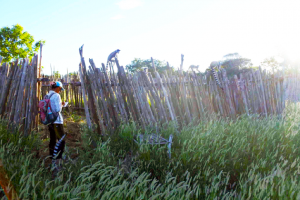 Photo 3. A joint international research at Berenty Reserve
Photo 3. A joint international research at Berenty Reserve
- Particularly noteworthy professional and personal experiences during my dispatch
I had once visited Kirindy forest in dry season (October). The impression of the forest during my visit in rainy season was quite different from that of the previous visit. I could not see feces of Fossa (Cryptoprocta ferox) which had been easily seen on the trail in dry season. Differing from the dry season, I could not directly observe the animal during my stay.
After 5 year-drought, there was plenty of rainfall in the rainy season in Berenty, southern Madagascar. The impression of the forest was different from that of last year since plenty of fruits was available for lemurs in the forest.
During my stay at Berenty, I used 5 sensor cameras on 5 places in the forest. The small Indian civet (Viverricula indica), the cat, and the dog were recorded with the cameras (Photo 4). Civets and cats were frequently recorded under a bird colony of Ardeidae. Some young birds that probably fell from the nests were also recorded on the same place. There is a possibility that the place is a hotspot of animals where some carnivores are attracted by fallen young birds and eggs. A female brown lemur which was seeking something on the ground was also recorded. Probably she was seeking fallen bird eggs. On the other hand, no animal was recorded with a camera on a trail. It surprised me since I had expected that many animals use the trail. Ring-tailed lemurs and brown lemurs were recorded with a camera on a place where fallen fruits left on the ground. Interestingly, brown lemur which is generally considered to be arboreal animal frequently fed the fallen fruits on the ground as well as ring-tailed lemur.
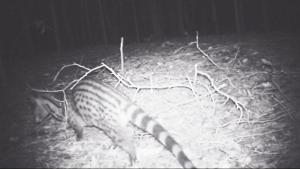 Photo 4. A small Indian civet (Viverricula indica) recorded by a sensor camera
Photo 4. A small Indian civet (Viverricula indica) recorded by a sensor camera
- Achievement of research objectives and areas needing improvement
I could start a new joint international research project with the University of Antananarivo, our counterpart in Madagascar. For the Memorandum of Understanding between our Center and the counterpart, it will take a little more time since other faculties (faculty of Science and that of Asian and African Area Studies) would join the new collaboration.
I continued interview with local people to collect data on local knowledge on vertebrate animals in the reserve. Using these data, I submitted a paper on vertebrate diversity and local knowledge to an international journal, African Study Monographs. I also continued collecting data on invertebrate animals and plants in the reserve. A list of them is not completed yet because of huge number of species.
- Challenges and objectives for the next dispatch
I plan to collect intensively data on vegetation of the reserve and local knowledge on plant species in my next dispatch since there is still a lack of information on them.

